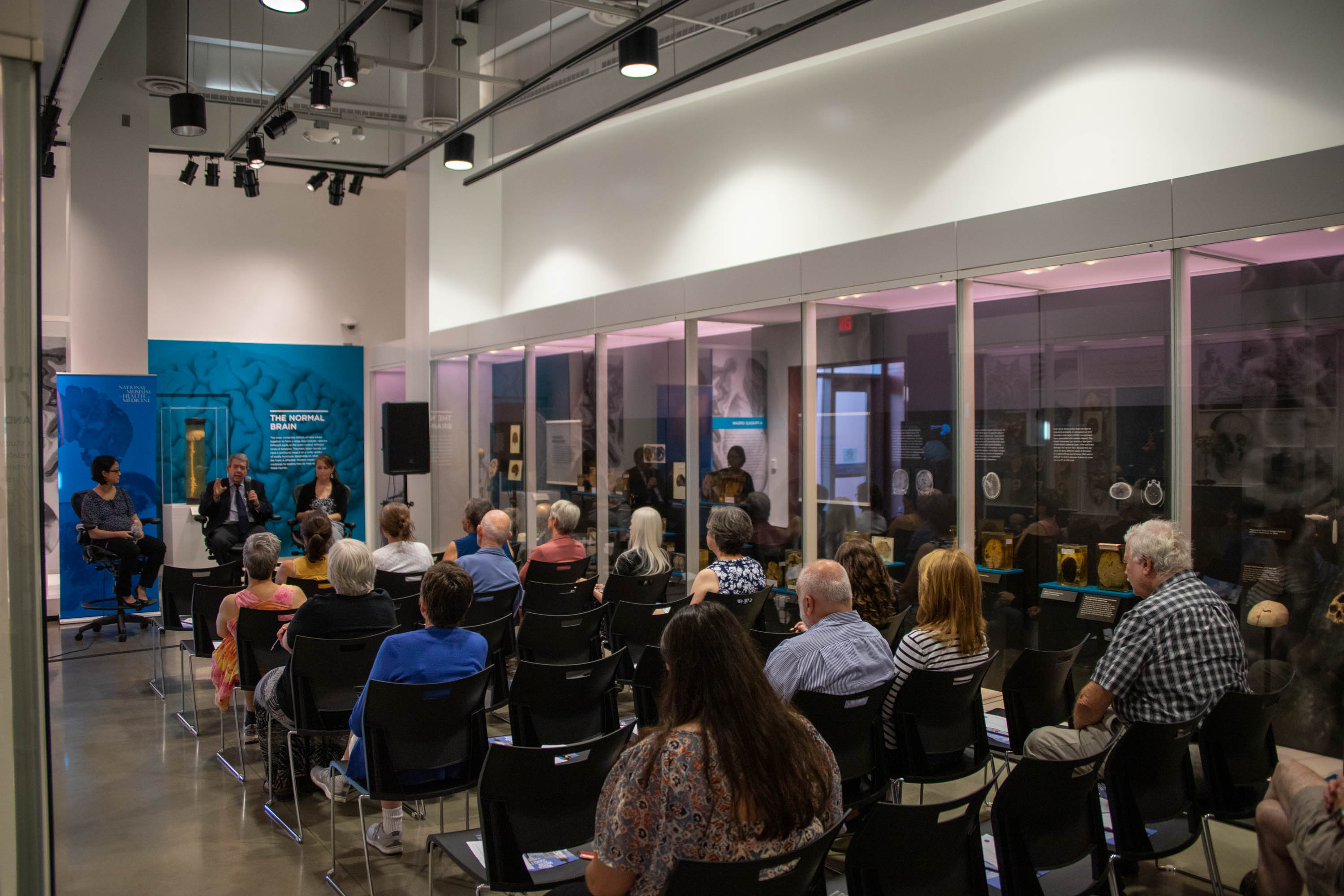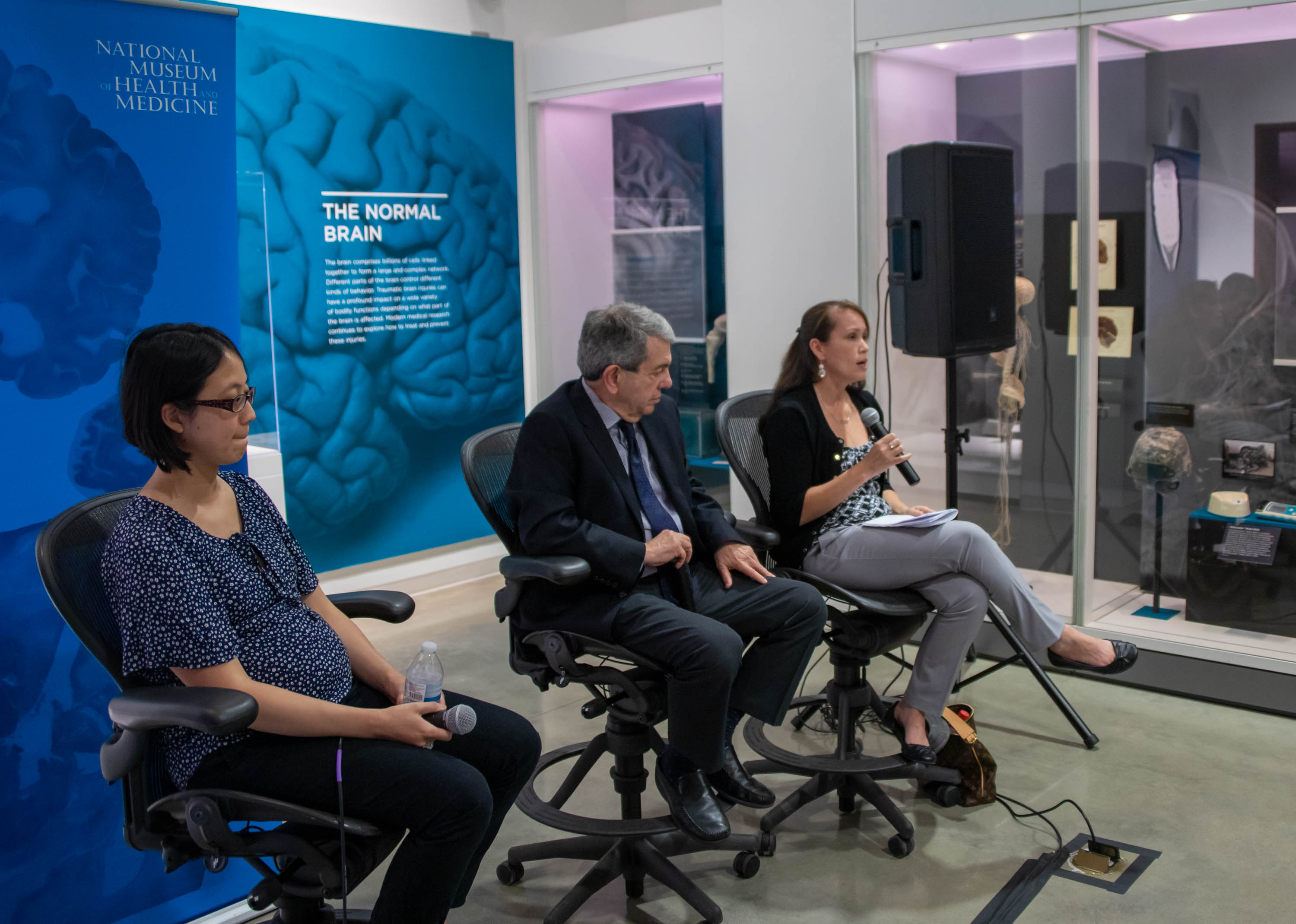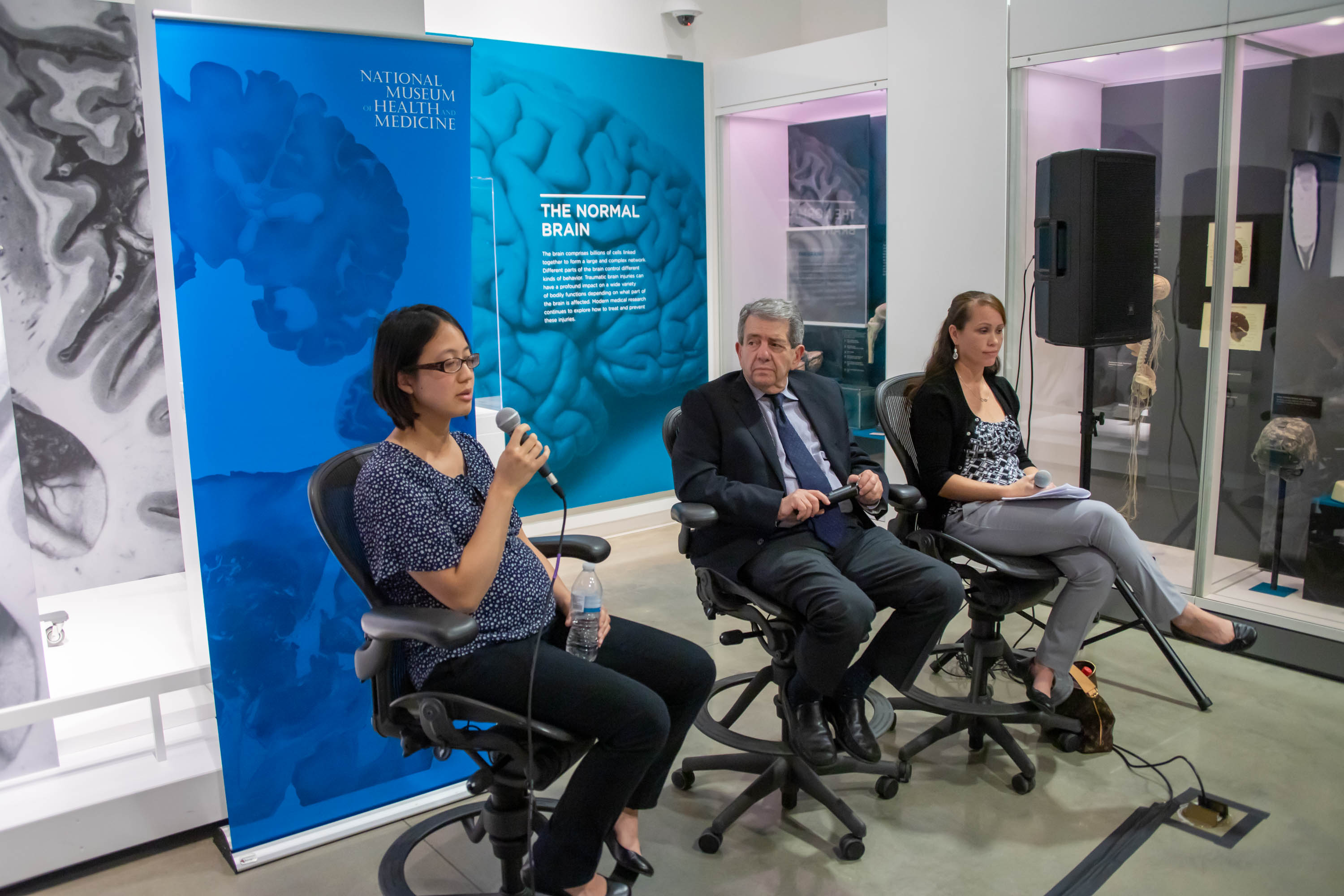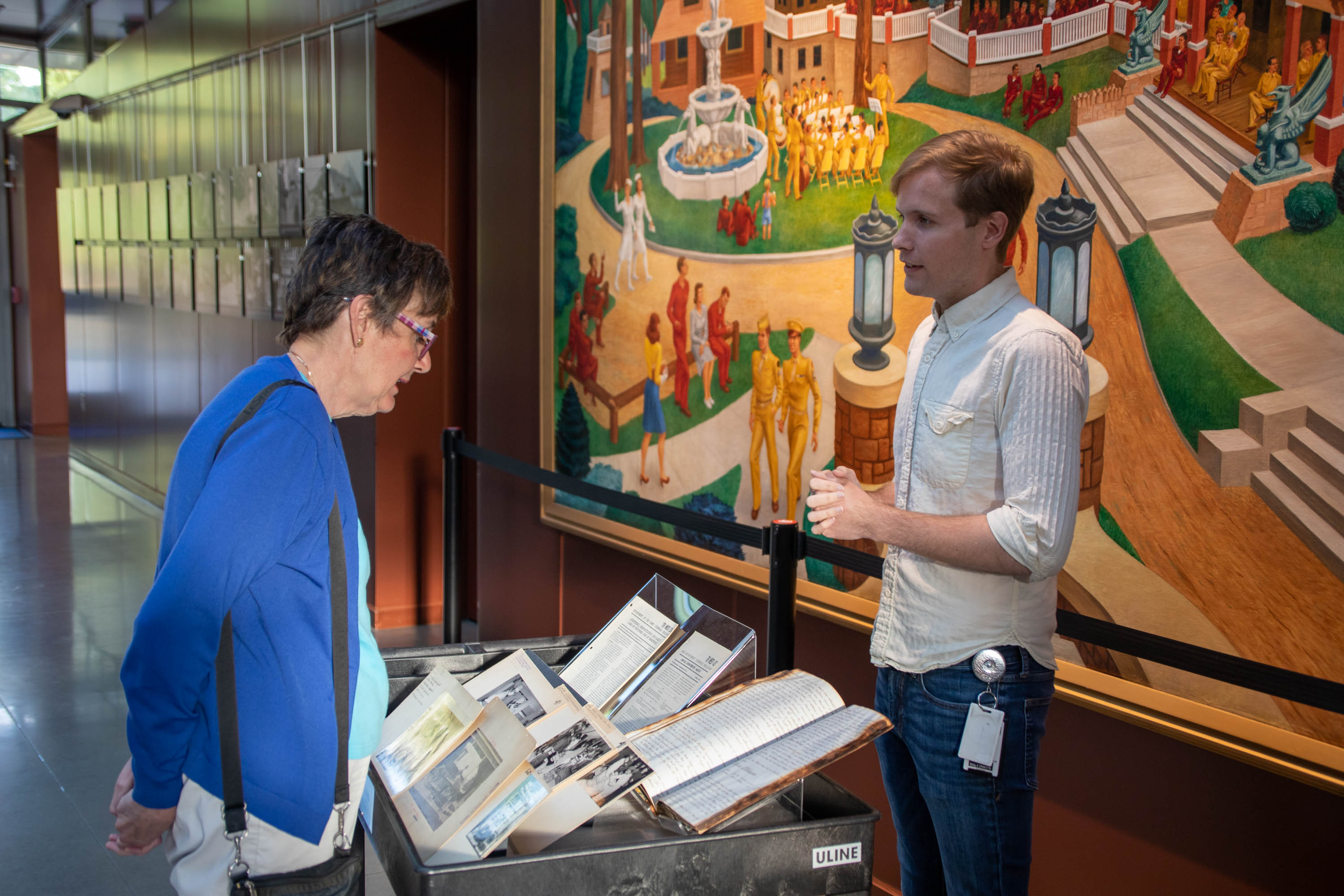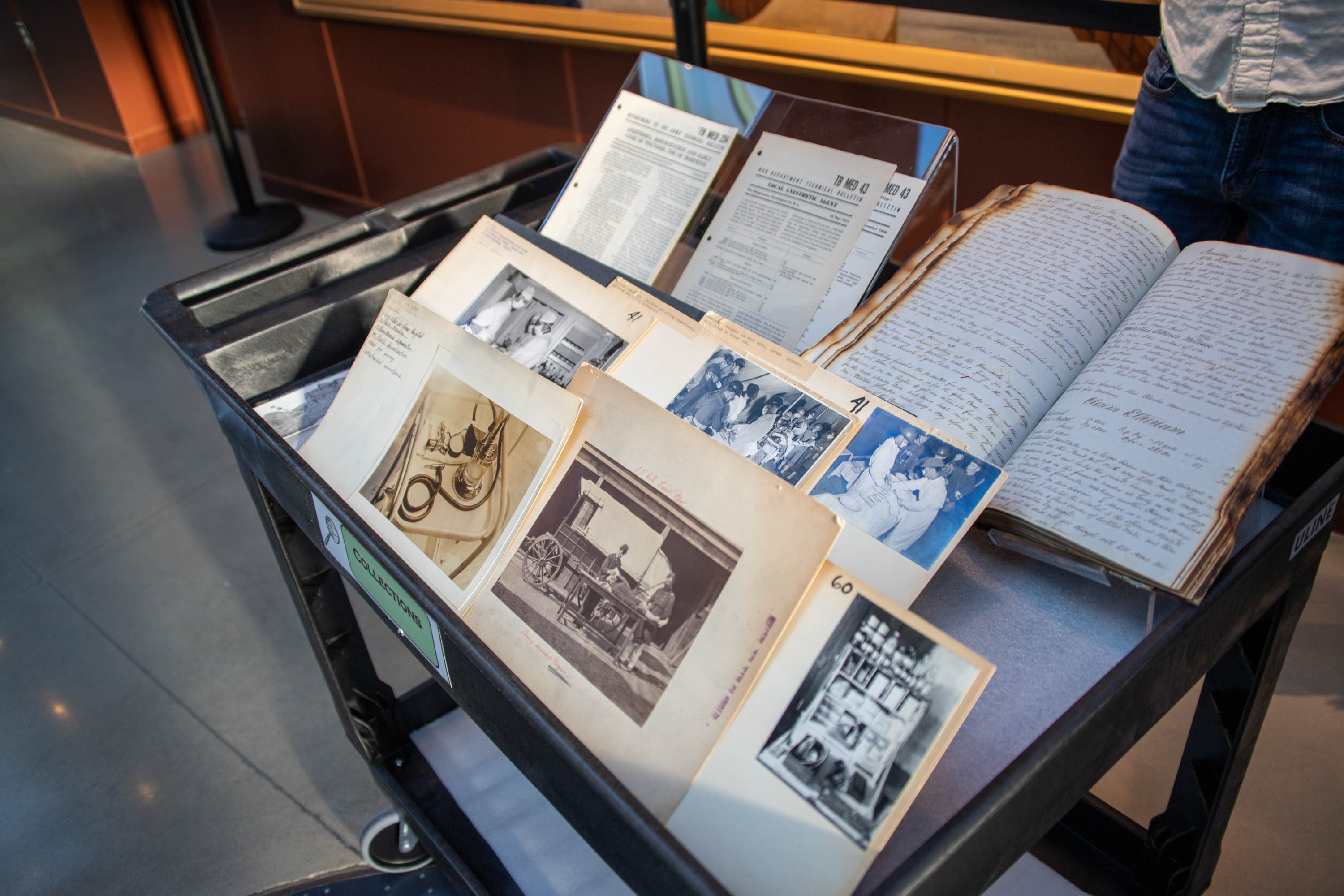Physicians Empower Patients to Consider the Value of Integrative Pain Treatments
By Jacqueline Gase
NMHM Public Affairs Coordinator
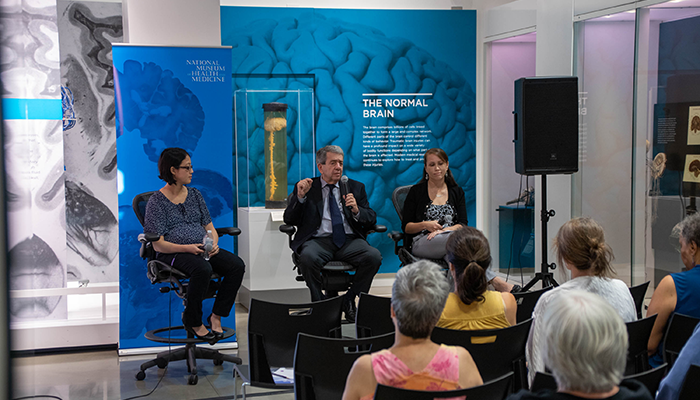
During the Sept. 24, 2019, Medical Museum Science Café titled "Pain Treatment in the Military: The Biopsychosocial Model," museum visitors listen to Walter Reed National Military Medical Center speakers U.S. Army Maj. Sherrell Lam (left), U.S. Army Lt. Col. Mae Miranda (right), and Dr. Harold Wain (center) at the National Museum of Health and Medicine in Silver Spring, Maryland. (NMHM photo)
Integrative approaches for pain management were highlighted during the Sept. 24, 2019, Medical Museum Science Café titled "Pain Treatment in the Military: The Biopsychosocial Model," at the National Museum of Health and Medicine in Silver Spring, Maryland.
At the event, U.S. Army Lt. Col. Mae Miranda, U.S. Army Maj. Sherrell Lam, and Dr. Harold Wain discussed the complexity of pain, the different modalities of pain management, and the relationship between the patient and their provider.
According to Wain, a professor in the Department of Psychiatry at the Uniformed Services University of Health Sciences, the biological, psychological, and social environments a patient experiences contribute to a patient's pain. "The mind…can exacerbate and embellish a physical or emotional pain that a patient is having," said Wain. By improving our understanding of the way pain is perceived, and integrating a biopsychosocial approach to treatment, providers can treat from the source of a patient's pain.
All three presenters emphasized minimizing prescription medications and adopting a model that relies on patient-centered care. A provider's relationship with a patient can both enhance the mutual understanding of the causes of the patient's pain and the development of effective treatment plans.
Miranda, a physical therapist from the Walter Reed National Military Medical Center, listed a variety of physical therapy modalities, such as electrical stimulation, joint mobilization, trigger point dry needling, and spinal traction therapy, which are often part of effective rehabilitation and pain management treatment plans. However, these approaches require time and effort from the patient, whereas a pill is immediate and easy, she explained.
"What we do as physical therapists is get the patient to trust us, to believe in us," said Miranda. This trust begins by demonstrating that our treatments can make small improvements with a patient's pain and function. Miranda and her colleagues are then able to continue to engage with their patients and empower them to embrace these more time intensive therapies.
As an internist and psychiatrist at Walter Reed, Lam's experience has shown that establishing trust and understanding with patients is key to developing effective pain management plans. Lam noted that for many patients, medications can become the sole coping mechanism. "Active duty and veteran populations…with war-related injuries [may experience] depression and post-traumatic stress disorder," said Lam. According to Lam, developing a long-term relationship with the patient helps providers understand the entirety of a patient's condition. This allows them to develop multi-modal treatment plans that include non-medication treatments and strategies to improve self-management of pain.
After the presentation, museum visitors were encouraged to view materials from the Otis Historical Archives related to pain management in the military, including a 1944 War Department Technical Bulletin detailing a local anesthetic agent. "The museum's collections document the various approaches military medicine has taken to achieve positive health outcomes for patients through historical precedents, current modalities, and future innovations," said Public Programs Manager Andrea Schierkolk. "It was especially important during Pain Management Month that our audiences were able to hear how military medicine is moving toward a patient-centered approach," she said.
The museum's public programs provide forums for informal learning that connect the mission of the Department of Defense museum with the public. For more information about upcoming events, call (301) 319-3303 or visit https://www.medicalmuseum.mil.
